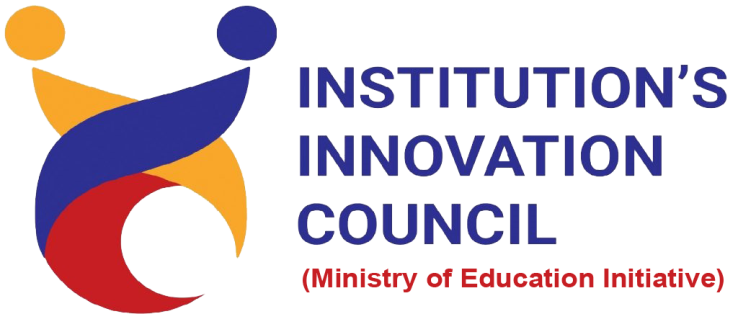
Biomedical Engineering
encompasses a broad range of objectives, all aimed at improving healthcare outcomes through the application of engineering principles to biology and medicine. Some key objectives in biomedical engineering include:
- Medical Device Development: Designing and creating medical devices such as prosthetics, artificial organs, imaging equipment, and diagnostic tools to enhance patient care and improve medical procedures.
- Biomechanics and Rehabilitation Engineering: Studying the mechanics of the human body to develop assistive technologies, rehabilitation devices, and therapies for individuals with physical disabilities or injuries.
- Biomedical Imaging: Advancing imaging techniques such as MRI, CT scans, ultrasound, and optical imaging to enhance diagnosis, treatment planning, and medical research.
- Tissue Engineering and Regenerative Medicine: Developing biomaterials, scaffolds, and techniques to regenerate damaged tissues and organs, with the goal of creating functional replacements for transplantation or tissue repair.
- Biomaterials and Biocompatibility: Researching and designing materials compatible with biological systems for use in medical devices, implants, and drug delivery systems, ensuring safety and effectiveness.
- Biomedical Informatics and Healthcare Technology Management: Utilizing computational methods and information technology to analyze healthcare data, improve patient care, and manage medical devices and systems efficiently.
- Clinical Engineering: Applying engineering principles to healthcare delivery systems, including equipment management, safety assurance, and infrastructure design, to ensure quality patient care and regulatory compliance.
- Bioinstrumentation: Developing sensors, monitoring devices, and measurement techniques for physiological parameters, enabling real-time monitoring of patient health and supporting medical diagnostics and treatment.
- Healthcare Policy and Ethics: Addressing ethical, legal, and regulatory issues related to the development and implementation of biomedical technologies, ensuring patient privacy, safety, and equitable access to healthcare innovations.
- Interdisciplinary Collaboration: Fostering collaboration between engineers, medical professionals, scientists, and other stakeholders to address complex healthcare challenges and translate research findings into clinical practice.
These objectives collectively aim to advance healthcare by leveraging engineering principles to develop innovative solutions that improve patient outcomes, enhance medical diagnostics and treatment, and ultimately contribute to better quality of life.

Computer Science Engineering
aimed at leveraging computational principles and technologies to address various challenges and opportunities across different domains. Some key objectives of computer science engineering include:
- Software Development: Designing, developing, and maintaining software applications and systems to address specific needs in areas such as business, education, healthcare, entertainment, and more.
- Algorithm Design and Analysis: Creating efficient algorithms and data structures to solve complex computational problems, optimize performance, and enable the development of scalable and reliable software systems.
- Artificial Intelligence and Machine Learning: Advancing the theory and application of AI and machine learning techniques to enable machines to learn from data, make decisions, and perform tasks that traditionally require human intelligence.
- Computer Networking and Security: Designing and managing computer networks, protocols, and security measures to ensure reliable communication, protect data and privacy, and mitigate cyber threats and attacks.
- Database Systems and Data Management: Developing systems for storing, retrieving, and managing large volumes of data efficiently, ensuring data integrity, security, and accessibility for various applications.
- Human-Computer Interaction (HCI): Studying how people interact with computers and designing user interfaces and experiences that are intuitive, efficient, and accessible to diverse user populations.
- Software Engineering Practices: Applying principles and methodologies of software engineering to systematically design, develop, test, deploy, and maintain high-quality software systems.
- Parallel and Distributed Computing: Designing algorithms and systems to leverage parallel and distributed computing architectures, enabling efficient utilization of resources and scalability for large-scale applications.
- Computer Graphics and Visualization: Developing techniques and tools for creating, rendering, and interacting with visual representations of data and virtual environments, enabling visualization and exploration of complex information.
- Computational Science and Engineering: Using computational models and simulations to study and solve problems in various scientific and engineering disciplines, including physics, biology, chemistry, and engineering.
- Cyber-Physical Systems: Integrating computational and physical components to create systems that interact with the physical world, such as autonomous vehicles, smart infrastructure, and wearable devices.
- Education and Research: Advancing knowledge in computer science through research and innovation, and educating the next generation of computer scientists and engineers to address emerging challenges and opportunities in the field.
These objectives collectively aim to advance the field of computer science engineering by developing innovative technologies, solving complex problems, and empowering individuals and organizations to leverage computational tools and techniques for societal benefit and progress.

Electrical and Electronics Engineering
encompasses a diverse array of objectives aimed at designing, developing, and maintaining systems and devices that use electricity, electronics, and electromagnetism. Some key objectives of electrical and electronics engineering include:
- Power Generation and Distribution: Designing systems for generating, transmitting, and distributing electrical power efficiently and reliably to meet the energy needs of society, while also exploring renewable energy sources and smart grid technologies.
- Electrical Machines and Drives: Developing efficient and reliable electric motors, generators, transformers, and drives for various applications, including industrial automation, transportation, and renewable energy systems.
- Electronics Design and Manufacturing: Designing electronic circuits and systems for applications ranging from consumer electronics and telecommunications to medical devices and aerospace technologies, while also optimizing manufacturing processes for efficiency and reliability.
- Control Systems: Designing feedback control systems to regulate and automate processes in industries such as manufacturing, robotics, automotive, and aerospace, ensuring stability, performance, and safety.
- Signal Processing and Communication: Developing algorithms and systems for processing, analyzing, and transmitting signals in communication systems, including wireless networks, satellite communications, digital broadcasting, and Internet-of-Things (IoT) devices.
- Embedded Systems: Designing and programming embedded systems that control and monitor devices and processes in real-time, often with limited resources and strict performance requirements, for applications in automotive, consumer electronics, medical devices, and industrial automation.
- Integrated Circuit Design: Designing and fabricating integrated circuits (ICs) and microelectronic devices, including digital and analog circuits, microprocessors, memory devices, and sensors, to enable advancements in computing, communication, and consumer electronics.
- Renewable Energy Systems: Designing and implementing systems for harnessing renewable energy sources such as solar, wind, and hydroelectric power, including the development of efficient energy conversion technologies, energy storage solutions, and grid integration strategies.
- Robotics and Automation: Designing robotic systems and automation solutions for various applications, including manufacturing, healthcare, agriculture, and space exploration, to improve productivity, efficiency, and safety.
- Safety and Reliability Engineering: Ensuring the safety, reliability, and compliance of electrical and electronics systems with industry standards and regulations, through risk assessment, failure analysis, testing, and quality assurance processes.
- Research and Innovation: Advancing knowledge and technology in electrical and electronics engineering through research, innovation, and collaboration with academia, industry, and government organizations, to address emerging challenges and opportunities.
These objectives collectively aim to advance the field of electrical and electronics engineering by developing innovative solutions, improving energy efficiency, enhancing communication and connectivity, and addressing societal needs for sustainable and technologically advanced systems.

Electronics and Communication Engineering (ECE)
encompasses a variety of objectives aimed at designing, developing, and optimizing electronic systems and communication technologies. Here are some key objectives of ECE:
- Design and Development of Electronic Devices and Systems: Creating electronic circuits, components, and systems for various applications such as consumer electronics, medical devices, industrial automation, and more.
- Telecommunication Systems: Designing and optimizing systems for transmitting and receiving information over long distances, including technologies such as wireless communication, satellite communication, optical communication, and cellular networks.
- Signal Processing: Developing algorithms and techniques for analyzing, processing, and manipulating signals to extract relevant information, enhance quality, and improve performance in applications like audio processing, image processing, and telecommunications.
- Embedded Systems: Designing and implementing embedded systems that integrate hardware and software to perform specific functions within larger systems, such as automotive electronics, IoT devices, and industrial control systems.
- Analog and Digital Electronics: Studying and designing electronic circuits and systems that process analog and digital signals, including components such as amplifiers, filters, analog-to-digital converters (ADCs), and digital-to-analog converters (DACs).
- Wireless Communication and Networking: Developing technologies and protocols for wireless communication systems, including standards like Wi-Fi, Bluetooth, Zigbee, and LTE, as well as network infrastructure and optimization techniques.
- RF and Microwave Engineering: Designing and optimizing radio frequency (RF) and microwave systems and components for applications such as radar systems, satellite communication, wireless networks, and microwave circuits.
- Integrated Circuit (IC) Design: Designing and fabricating integrated circuits (ICs) and semiconductor devices using techniques such as VLSI (Very Large Scale Integration) and ASIC (Application-Specific Integrated Circuit) design, enabling the development of advanced electronic systems.
- Communication Networks and Protocols: Developing protocols, algorithms, and architectures for communication networks, including data transmission, routing, congestion control, and network security, to ensure efficient and reliable communication in wired and wireless networks.
- Optical Communication and Photonics: Designing and optimizing systems for transmitting and processing optical signals, including technologies such as fiber optics, lasers, photo detectors, and optical amplifiers, for applications in telecommunications, sensing, and imaging.
- Digital Signal Processing (DSP): Developing algorithms and hardware implementations for processing digital signals in real-time, enabling applications such as audio and video processing, speech recognition, and digital communications.
- Education and Research: Advancing knowledge in electronics and communication engineering through research, innovation, and education, and preparing students to address emerging challenges and opportunities in the field.
These objectives collectively aim to advance the field of electronics and communication engineering by developing innovative technologies, improving communication systems, and enabling connectivity and information exchange in various domains for societal benefit and progress.

Mechanical Engineering
encompasses a wide range of objectives aimed at designing, analyzing, manufacturing, and maintaining mechanical systems and processes. Some key objectives of mechanical engineering include:
- Product Design and Development: Designing and developing mechanical components, systems, and products that meet specific performance, reliability, and safety requirements, while considering factors such as cost, manufacturability, and environmental sustainability.
- Mechanical Systems Analysis: Analyzing the behavior, performance, and interactions of mechanical systems using principles of mechanics, dynamics, thermodynamics, and materials science, to optimize design and ensure functionality and durability.
- Manufacturing Processes and Automation: Developing and optimizing manufacturing processes, techniques, and systems for producing mechanical components and products efficiently, accurately, and cost-effectively, while also exploring automation and robotics technologies to improve productivity and quality.
- Energy Systems and Renewable Energy: Designing and optimizing energy systems and devices, such as engines, turbines, HVAC systems, and renewable energy technologies, to improve energy efficiency, reduce environmental impact, and promote sustainability.
- Fluid Mechanics and Aerodynamics: Studying the behavior of fluids and gases in motion and applying principles of fluid mechanics and aerodynamics to design and analyze systems such as pumps, turbines, HVAC systems, and aircraft, to optimize performance and efficiency.
- Materials Selection and Engineering: Selecting and engineering materials for specific applications based on their mechanical properties, durability, cost, and environmental impact, while also exploring advanced materials and nanotechnology for improved performance and functionality.
- Control Systems and Robotics: Designing and implementing control systems for regulating and automating mechanical processes and systems, including robotics, mechatronics, and automation technologies, to improve precision, efficiency, and safety.
- Structural Analysis and Design: Analyzing and designing structures and mechanical components to withstand loads and stresses, ensuring safety, reliability, and compliance with engineering standards and regulations, while also exploring lightweight and composite materials for weight reduction and performance enhancement.
- Vehicle Design and Transportation Systems: Designing and optimizing vehicles, transportation systems, and automotive components for performance, safety, and efficiency, while also exploring alternative fuels, electric propulsion, and autonomous vehicle technologies to address environmental and societal challenges.
- Biomechanics and Medical Devices: Applying principles of mechanical engineering to the design and development of medical devices, prosthetics, and rehabilitation technologies, to improve healthcare outcomes and quality of life for individuals with disabilities or injuries.
- Research and Innovation: Advancing knowledge and technology in mechanical engineering through research, experimentation, and innovation, to address emerging challenges and opportunities in areas such as nanotechnology, additive manufacturing, and smart materials.
These objectives collectively aim to advance the field of mechanical engineering by developing innovative solutions, improving performance and efficiency, promoting sustainability and environmental stewardship, and addressing societal needs across various industries and applications.

Civil Engineering
encompasses a diverse range of objectives aimed at designing, constructing, maintaining, and improving infrastructure and built environments to meet societal needs. Some key objectives of civil engineering include:
- Infrastructure Development: Designing and constructing infrastructure systems such as roads, bridges, railways, airports, and ports to facilitate transportation and commerce, enhance connectivity, and promote economic growth and development.
- Building Construction and Design: Designing and constructing residential, commercial, industrial, and institutional buildings that are safe, durable, and functional, while also considering factors such as sustainability, accessibility, and aesthetics.
- Water Resources Management: Developing and managing water supply and distribution systems, wastewater treatment facilities, flood control measures, and coastal protection structures to ensure access to clean water, mitigate water-related hazards, and protect the environment.
- Environmental Engineering: Assessing and mitigating the environmental impact of civil engineering projects, including pollution control, waste management, environmental remediation, and sustainable design practices to promote environmental sustainability and resilience.
- Geotechnical Engineering: Investigating and analyzing soil and rock properties to design foundations, retaining structures, embankments, and earthworks that are stable and safe, ensuring the structural integrity of civil engineering projects.
- Structural Engineering: Designing and analyzing structural systems such as buildings, bridges, dams, and towers to withstand loads and stresses, ensuring safety, durability, and compliance with building codes and standards.
- Transportation Engineering: Planning, designing, and managing transportation networks and systems, including roads, highways, railways, and transit systems, to optimize traffic flow, improve safety, and enhance accessibility and mobility.
- Urban Planning and Development: Collaborating with urban planners, architects, and policymakers to design and develop sustainable, livable, and resilient cities and communities, integrating land use, transportation, and environmental considerations.
- Construction Management: Managing construction projects from conception to completion, including planning, scheduling, budgeting, procurement, and quality control, to ensure projects are delivered on time, within budget, and to the required standards.
- Risk Assessment and Disaster Management: Assessing and mitigating risks associated with natural disasters, climate change, and other hazards, including seismic design, floodplain management, and emergency response planning, to enhance community resilience and safety.
- Infrastructure Rehabilitation and Maintenance: Inspecting, repairing, and maintaining existing infrastructure assets to extend their service life, optimize performance, and minimize lifecycle costs, ensuring the continued functionality and safety of critical infrastructure systems.
- Research and Innovation: Advancing knowledge and technology in civil engineering through research, experimentation, and innovation, to address emerging challenges and opportunities in areas such as materials science, construction techniques, and infrastructure management.
These objectives collectively aim to address societal needs, enhance quality of life, promote sustainable development, and contribute to the resilience and prosperity of communities around the world.

Information Technology (IT)
The field of Information Technology (IT) encompasses a wide range of objectives aimed at leveraging technology to manage and process information efficiently. Some key objectives of Information Technology include:
- Information Management: Developing systems and processes for the efficient collection, storage, retrieval, and dissemination of information within organizations, enabling better decision-making and workflow automation.
- Network Infrastructure: Designing, implementing, and maintaining network infrastructure, including hardware, software, and protocols, to facilitate communication and data transfer within and between organizations.
- Cyber security: Protecting information systems, networks, and data from unauthorized access, attacks, and breaches through the implementation of security measures such as encryption, access controls, firewalls, and intrusion detection systems.
- Software Development: Designing, developing, and maintaining software applications and systems to address specific business needs, enhance productivity, and improve customer experiences.
- Database Management: Designing and managing databases to organize and store structured and unstructured data, enabling efficient data retrieval, analysis, and reporting for decision-making and business intelligence purposes.
- Cloud Computing: Leveraging cloud computing technologies to provide scalable and flexible computing resources, storage, and services over the internet, enabling organizations to reduce costs, improve agility, and scale their operations.
- Enterprise Systems: Implementing and managing enterprise resource planning (ERP), customer relationship management (CRM), and other integrated software solutions to streamline business processes, improve efficiency, and enhance collaboration across departments.
- Web Development and E-commerce: Creating and managing websites, web applications, and e-commerce platforms to facilitate online transactions, marketing, and customer interactions, enabling businesses to reach a global audience and expand their market presence.
- Data Analytics and Business Intelligence: Analyzing large volumes of data to extract insights, trends, and patterns that can inform strategic decision-making, improve operational efficiency, and drive innovation within organizations.
- Mobile Computing: Developing mobile applications and services for smartphones, tablets, and other mobile devices, enabling users to access information and perform tasks on the go, while also addressing security and privacy concerns.
- Digital Transformation: Supporting organizations in adopting digital technologies and strategies to transform their business processes, services, and models, enabling them to stay competitive in a rapidly evolving digital economy.
- IT Governance and Compliance: Establishing policies, procedures, and controls to ensure the effective management, oversight, and compliance of IT assets, activities, and initiatives with regulatory requirements and industry standards.
These objectives collectively aim to leverage technology to optimize business processes, enhance communication and collaboration, improve decision-making, and drive innovation and growth within organizations across various industries.

Master of Business Administration (MBA)
The objectives of a Master of Business Administration (MBA) program typically aim to equip students with the knowledge, skills, and perspectives needed to succeed in various management and leadership roles across different industries. Some key objectives of an MBA program include:
- Developing Leadership Skills: Cultivating leadership qualities such as strategic thinking, decision-making, communication, and team management to effectively lead organizations and teams in a dynamic business environment.
- Building Business Acumen: Providing a comprehensive understanding of business concepts, principles, and practices across various functional areas such as finance, marketing, operations, human resources, and strategy.
- Enhancing Analytical and Problem-Solving Skills: Equipping students with analytical tools and frameworks to analyze complex business problems, make data-driven decisions, and develop innovative solutions to business challenges.
- Fostering Global Perspectives: Exposing students to global business environments, cultural diversity, and international markets to develop the ability to navigate and succeed in a globalized economy.
- Promoting Ethical and Responsible Leadership: Instilling ethical awareness, social responsibility, and sustainability principles in decision-making and business practices, emphasizing the importance of ethical leadership and corporate governance.
- Facilitating Networking and Relationship Building: Providing opportunities for students to connect with peers, faculty, alumni, and industry professionals to build a strong professional network, exchange ideas, and access career opportunities.
- Encouraging Entrepreneurial Thinking: Encouraging entrepreneurial mindset and skills such as innovation, creativity, risk-taking, and opportunity recognition, to foster an entrepreneurial spirit and drive innovation within organizations.
- Preparing for Career Advancement: Equipping students with the knowledge, skills, and resources to advance their careers, whether through promotions within their current organization, transitioning to new industries or roles, or starting their own ventures.
- Experiential Learning and Real-World Application: Providing opportunities for students to apply theoretical knowledge to real-world business situations through case studies, projects, internships, and experiential learning opportunities.
- Continuous Learning and Professional Development: Fostering a commitment to lifelong learning and professional development, encouraging students to stay updated on industry trends, acquire new skills, and adapt to evolving business landscapes throughout their careers.
- Preparing for Industry Certifications and Professional Designations: Offering specialized tracks or concentrations within the MBA program that align with industry certifications or professional designations, enhancing students' credentials and marketability in specific fields.
- Cultivating Critical Thinking and Communication Skills: Developing critical thinking, problem-solving, and communication skills to effectively analyze and communicate complex ideas, strategies, and recommendations to diverse stakeholders.
Overall, the objectives of an MBA program aim to prepare students to become versatile, adaptable, and ethical business leaders who can navigate complexities, drive innovation, and create value in a rapidly changing global business environment.

Master of Computer Applications (MCA)
The objectives of a Master of Computer Applications (MCA) program typically aim to equip students with advanced knowledge, practical skills, and a strong foundation in computer science and software engineering to excel in various roles within the field of information technology. Here are some key objectives of an MCA program:
- Advanced Technical Knowledge: Provide students with advanced knowledge and understanding of core concepts in computer science, including data structures, algorithms, programming languages, database management, operating systems, and computer networks.
- Software Development Expertise: Equip students with practical skills in software design, development, testing, and maintenance using modern development tools, technologies, and methodologies.
- Specialization and Electives: Offer specialization tracks or elective courses in areas such as artificial intelligence, machine learning, data science, cyber security, cloud computing, mobile application development, web development, and database systems, allowing students to tailor their studies to their interests and career goals.
- Problem-Solving Skills: Develop students' abilities to analyze complex problems, devise effective solutions, and implement them using appropriate computational techniques and tools.
- Project Management Abilities: Provide training in project management principles, methodologies, and tools to enable students to plan, execute, and manage software development projects effectively, meeting deadlines and delivering high-quality solutions.
- Industry-Relevant Curriculum: Design the curriculum in collaboration with industry partners to ensure alignment with current industry trends, practices, and technologies, preparing students for successful careers in the rapidly evolving field of information technology.
- Hands-On Experience: Offer opportunities for students to gain practical experience through internships, industry projects, and laboratory assignments, allowing them to apply theoretical knowledge to real-world problems and develop valuable skills.
- Professional Development: Provide guidance and support for students' professional development, including resume writing, job search strategies, interview preparation, and networking opportunities, to facilitate successful entry into the workforce.
- Ethical and Social Responsibility: Promote ethical conduct, social responsibility, and awareness of the ethical implications of technology, emphasizing the importance of ethical decision-making, privacy protection, and cyber security in software development and IT practices.
- Research and Innovation: Encourage students to engage in research activities, pursue academic projects, and contribute to the advancement of knowledge in computer science and related fields, fostering a culture of innovation, creativity, and intellectual curiosity.
- Continuous Learning: Instill a commitment to lifelong learning and professional development, encouraging students to stay updated on emerging technologies, industry trends, and best practices through self-study, continuing education, and participation in professional organizations and conferences.
Overall, the objectives of an MCA program aim to prepare students for diverse and rewarding careers in software development, IT management, consulting, entrepreneurship, and research, by providing them with a comprehensive education that combines theoretical knowledge, practical skills, and industry experience.


